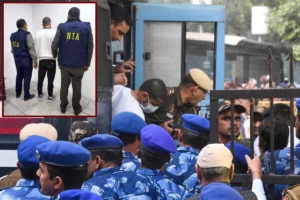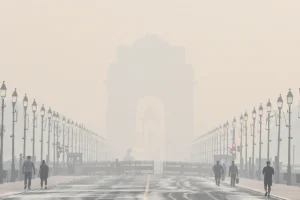
Japan Earthquake
Japan Earthquake: Six days after a strong earthquake struck western Japan, killing at least 126 people, rescue workers braved the snow to bring supplies to remote hamlets. There was even more urgency because heavy snowfall was predicted in the Ishikawa area later on Sunday and into the night.
Following Monday’s 7.6-magnitude earthquake, 560 people were injured and 222 individuals remained unaccounted for. The epicenter of the earthquakes, the Noto Peninsula, has been rocked by hundreds of aftershocks.
Life wrecked by earthquake in Japan
Taiyo Matsushita, a local common guy, spent three hours trekking through mud to get to a supermarket in Wajima city where he needed to buy food and other necessities for his family. Among more than a dozen towns cut off by landslides is the house he shares with his wife and four children, as well as roughly twenty other residences in the area. He told the journalists that they had no power and that they wouldn’t even be able to use their cell phones in a few hours.
“We want everyone to know help isn’t coming to some places,” Matsushita was quoted as saying by media. “We feel such an attachment to this community. But when I think about my children, it’s hard to imagine we can keep living here.”
Also Read: Japan To Accept Only United States Earthquake Aid
Rescue operation continues…
After spending 124 hours buried in the debris, a 90-year-old woman was freed from a collapsed house in Suzu, Ishikawa Prefecture, late on Saturday. Shouts of support greeted her, but she was hidden from view by a long blue sheet of plastic and the darkness. After the first 72 hours, there is a significant decline in survival chances.
1,370 dwellings were either totally or partially destroyed, according to Ishikawa officials. In the main island’s western coastline region, a large number of the homes are old and made of wood. Cars on uneven, damaged roadways lay strewn about. Snow covered the roads and garbage. From uneven poles, wires dangled.
Over 30,000 individuals sought shelter in community centers, auditoriums, and schools, where they slept on chilly floors. Through the aftershocks, they shuddered in terror. They hoped their missing family members were secure. Others let out quiet sobs in memory of the deceased.
There were enormous lineups at gas stations, and some individuals were living out of their automobiles. Water and food were in scarce supply. Concerns about snow and rain increased because they can cause mudslides and more damage, as snow accumulation on rooftops can topple homes that are already barely standing.
To read more such news, download Bharat Express news apps


















